10 Biggest Networking Stories Of 2008
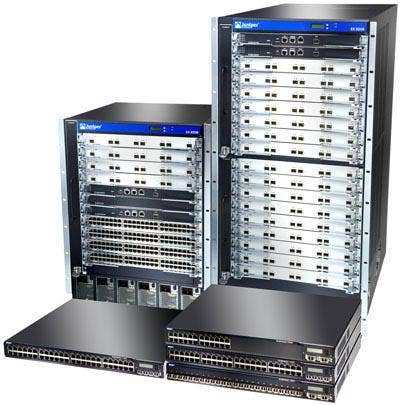
The industry's worst-kept secret of 2007 became the first big story of 2008. In January, Juniper Networks solidified its high-performance networking vision and officially painted its end-to-end networking picture with the announcement of its first-ever line of enterprise Ethernet switches, the EX Series.
Met with both open arms and a critical eye, Juniper's entrance into the switching game shook the networking industry by creating a real alternative to market leader and networking behemoth Cisco Systems. The EX 3200, the EX 4200 and the EX 8200 hit a sweet spot for Juniper and filled a gaping void in its portfolio.
As of the second quarter of 2008, the EX line had been deployed by 100 different customers and brought in $10 million.
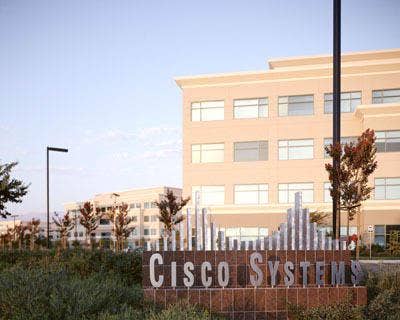
2008 also marked a year where smaller networking players, like HP ProCurve, Juniper and others, started making great strides and chipped away at Cisco's dominant market share. And partners took notice, with some saying that Cisco is spreading itself too thin by dabbling in new and emerging technologies instead of focusing on its core networking competencies.
A pair of surveys also found that Cisco is sliding. A UBS Investment Research survey found that Cisco lost some of its clout with solution providers, likely due to it focusing more on segments like VoIP, security, wireless, Web 2.0 and a host of others that led VARs to keep a keen eye on other, lower-cost networking vendors they say could prove to be true rivals for the incumbent champion's network supremacy. The UBS survey found that solution providers are seeing the competition heating up to control the enterprise LAN and that more VARs will turn to alternative vendors to fill their customers' needs, mainly due to the lower costs and higher returns. According to the survey, VARs see ProCurve and Juniper chipping away at Cisco's visibility in the channel, mainly due to their lower cost and mostly similar functionality.
Another survey, performed by Goldman Sachs, also showed that Cisco is slipping in routing and switching, despite seeing market-share increases in nearly every other category it serves. In enterprise routers, Goldman Sachs said, Cisco declined from 84 percent to 82 percent market share and in switching it dipped from 71.7 percent to 71.4 percent.
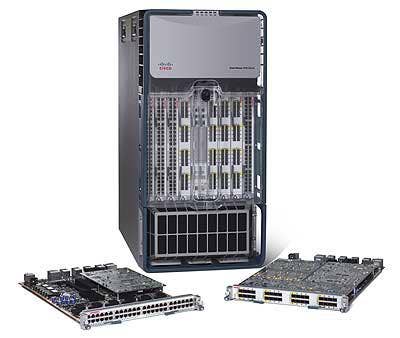
Cisco got the ball rolling, unveiling its Nexus line of data center switches, another indicator that Cisco's Data Center 3.0 strategy was not just lip service, but instead a plotted assault on the data center. According to Cisco, the Nexus line, which saw the launch of the Nexus 7000 Series (pictured) in January and the Nexus 5000 Series in April, would help solution providers get a piece of the $14 billion data center hardware and services opportunity expected over the next five years. Cisco further entrenched itself in the data center with a new specialization for partners and by adding new data center-focused gear to its Value Incentive Program.
Later in the year, Juniper also made a data center play, unveiling its Data Center Infrastructure Solutions play, which ties in the aforementioned EX Series switches to fortify its data center vision. Juniper's data center network architecture, which combines the EX 4200 virtual chassis switch, the SRX security solution, the EX 8200 data center switch for 10 Gigabit Ethernet and the MX Ethernet series router to connect across data centers, was designed to aid in data center consolidation and server virtualization. Juniper has positioned its data center infrastructure solution set as an architecture that reduces complexity and decreases total cost of ownership in the data center.
Elsewhere, other traditional networking vendors put their hands in the data center cookie jar, and more are soon to follow, but both Cisco and Juniper broke new ground in 2008 with their bids to not only control the network, but to control the technologies that power it.
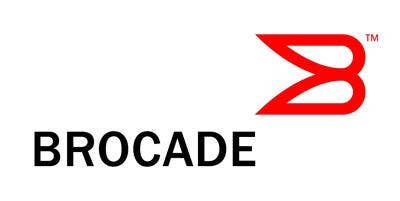
In another sign that networking vendors are playing the data center game, storage vendor Brocade branched into the networking arena when it acquired Foundry, an acquisition that was just completed in mid-December. The move brings a line of enterprise networking gear to the Brocade portfolio, making it a solid competitor for Cisco Systems, which has also made strides into the data center.
"The close of the Foundry acquisition will significantly enhance our ability to deliver on our mission of connecting the world's most important information," said Mike Klayko, CEO of Brocade, in a statement. "Brocade will now be able to offer a comprehensive IP and data center networking solution portfolio capable of addressing emerging market technology trends while meeting the needs of the world's most demanding, data-intensive organizations."
The $2.6 billion deal was first revealed in July and, by many accounts, a Brocade/Foundry mash-up will be a powerhouse of competition, and possibly a barrier for Cisco's attempted data center dominance.

What's a year without a few high-profile executives leaving their posts? There were several, but the two biggest were John McHugh leaving HP ProCurve and Jayshree Ullal resigning from Cisco.
McHugh, known by many as the "Godfather of ProCurve," joined HP in 1982 and left his position as vice president and worldwide general manager of HP's ProCurve Networking division in June. McHugh was credited with building the ProCurve brand from the ground up, making it a $1 billion-plus company. A few weeks after McHugh's sudden departure, Marius Haas took the reins at ProCurve as senior vice president and general manager.
Ullal (pictured), long seen as one of Cisco's key visionaries and its data center guru, was the face of Cisco's Data Center 3.0 vision and the executive whose data center, switching and services group brought in $12 billion for the networking giant in 2007. Ullal announced in May that she was leaving her post after roughly 15 years with Cisco. In October, Ullal was named president and CEO of cloud networking company Arista.

2008 was a year of disappointment then redemption for vendor and one-time networking pioneer 3Com. 3Com started off the year with a one-two-three punch that left partners questioning their allegiance to the struggling vendor.
First, 3Com ousted global channel chief Nick Tidd and his team to take a more regional, geography-based channel approach.
Shortly thereafter, a pending merger transaction with Bain Capital Partners, an investment firm that many VARs thought might steady 3Com's course, went bust. In September 2007, Bain offered to buy 3Com for $2.2 billion, a deal that would've made Chinese networking equipment vendor Huawei Technologies a minority shareholder with a 16 percent stake. Huawei's reported ties to the communist government had many U.S. companies concerned about security. The deal broke down in March when Bain and 3Com could not reach an agreement and the Committee on Foreign Investment in the U.S., a government agency that reviews and can block international transactions based on national security, seemed likely to refuse the merger.
In the wake of the Bain deal debacle, 3Com tossed out President and CEO Edgar Masri at the end of April, replacing him with board member Robert Mao (pictured), who is based in China. 3Com said the decision supported its increasing focus on its China-based H3C operations and that Mao's bi-cultural background could bridge 3Com's Chinese and Western operations.
Toward the end of 2008, however, 3Com re-emerged, forging new lines of communication with partners -- something many VARs said 3Com lacked -- through a series of Webcasts. 3Com also appointed Alex Dobson as its new vice president and general manager of North American sales. Under Dobson's leadership, 3Com launched a new "direct touch" sales approach through which 3Com account executives create initial contact to engage customers and then go hand-in-hand into deals with a partner, enabling 3Com to know customers better and have direct involvement with driving sales and business through partners.
3Com's recent changes after a tumultuous year, VARs have said, are steps in the right direction.
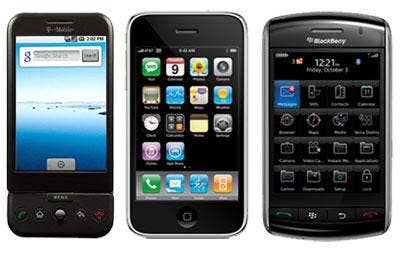
Holy cow, 2008 was a great year for smartphones, but none were as widely regarded and scrutinized as the trio of touch-screen titans: the Apple iPhone 3G, the T-Mobile G1 and the BlackBerry Storm.
As smartphones and mobile devices continued to become wireless networking staples, enabling access to corporate applications and essentially becoming an office in your pocket, these three gadgets not only presented slick mobile computing options, but also sparked heated competition.
The iPhone, G1 and the Storm, which were all released in the second half of 2008, marked several firsts. For the iPhone, it was the first 3G device and knocked the now-iconic smartphone's price tag down to $199 and $299 for the 8 GB and 16 GB models, respectively. The G1 was the first commercially available smartphone running the open-source Google Android mobile operating system. And the Storm was the first touch-screen device from BlackBerry maker Research In Motion (RIM) in BlackBerry's 10-year history.
The release of these three touch-screen treats sent the smartphone world scrambling and sparked a host of clones and imitators. The war for touch-screen supremacy is expected to rage on well into 2009, but the battle was forged here in 2008.

Baltimore, known by some as Charm City, got a wireless makeover in September in the form of WiMax, the on-again, off-again new high-speed wireless broadband.
Baltimore was the first stop on Sprint Nextel's WiMax express with Chicago and Washington, D.C., next on the list.
According to Sprint, its WiMax network, called XOHM, enables users to download at speeds 2 Mbps to 4 Mbps faster than existing wireless devices. Granted, customers need new hardware -- a XOHM-branded Samsung Express air card or Zyxel modem (pictured) -- and a subscription to take advantage of the high-speed wireless.
The Baltimore rollout showed once and for all that WiMax, which has been in discussion for more than two years, will be a viable wireless option now and into the future.
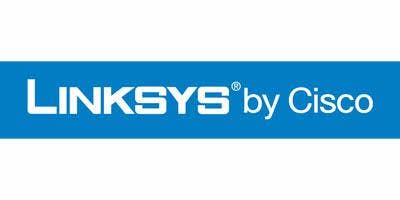
First, Cisco absorbed the Linksys partner program into its own. Then Cisco said it will no longer release new small business products under the Linksys brand. Instead, "Linksys By Cisco" branding will be exclusively used for consumer products, while Cisco rebrands Linksys products as its own.
The gobbling up of Linksys and making it a more consumer-focused company come as Cisco plans its attack on the SMB. Along with the Linksys switcheroo, Cisco plans to launch a new Small Business Pro line of products, which is part of its $100 million investment in small business.
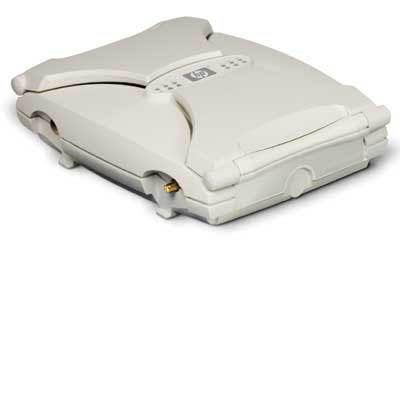
As HP ProCurve continues its attack on Cisco, it also solidified its position as a key wireless player with the August acquisition of Colubris Networks, a wireless networking vendor that has boosted ProCurve's visibility in the wireless LAN space. The Colubris buy gives ProCurve new life in the 802.11n space.
As of November, ProCurve had folded more than 20 Colubris products into its portfolio and introduced a new 802.11n access point, the HP ProCurve MSM410, a single-radio, 11n indoor access point designed for installations in hotels, hospitals, dorms and office environments. The doorbell-style single-radio access point was designed to blend in, without visible "spider leg" antennas.
Shown here is a ProCurve WLAN access point.